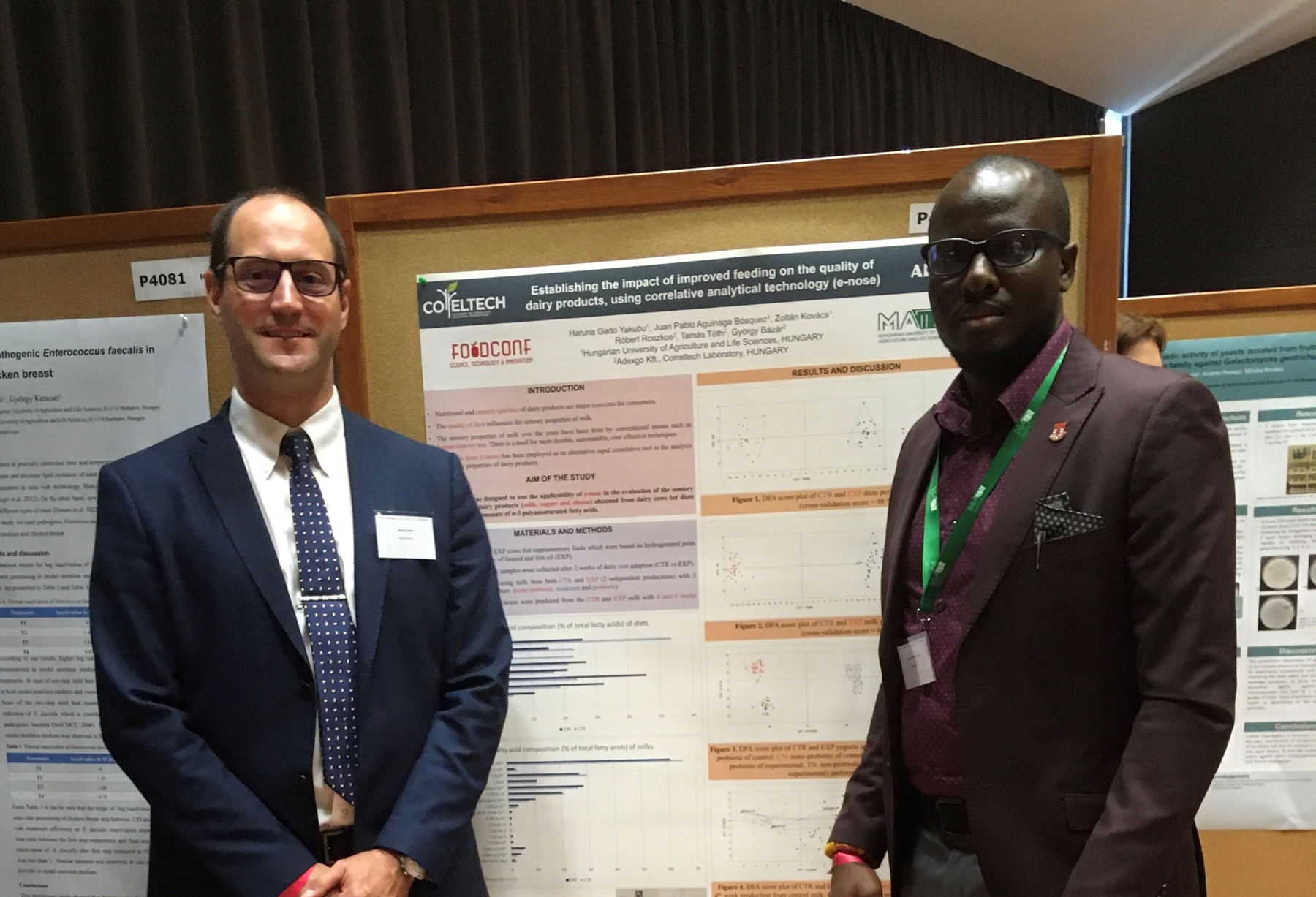Articles
Thanks to technical-technological development, it is now possible to fully automate feeding on cattle farms, with so-called mixing and feeding robots (e.g. controlled by GPS receiver, sensors), which, moving along a fixed path, evenly distribute the homogeneous mixture they have prepared (total mixed ration – TMR, or partial mixed ration – PMR) in front of the cows with a pre-programmed frequency.
A tejelő tehenészetek takarmányozásának automatizálása keverő-kiosztó robotokkal
Articles
Carbohydrates are the most important source of energy for ruminants, which are most often divided into structural and non-structural carbohydrates. The neutral detergent fiber (NDF) fraction accounts for the majority of the structural carbohydrates that make up the cell walls of plants, which covers very heterogeneous chemical compounds: cellulose, hemicellulose, lignin, and e.g. the non-soluble part of pectins. The acid detergent fiber (ADF) fraction consists of cellulose and lignin, and the latter is indigestible to ruminants, similarly to monogastric animals (e.g. pigs, poultry). Structural carbohydrates (NDF, ADF) break down more slowly and are less digestible compared to non-structural carbohydrates (e.g. starch, sugar, soluble part of pectins, glucans, as well as fermentation end products in feeds preserved by fermentation – lactic acid, acetic acid, butyric acid, etc.). The balanced ratio of the two groups (structural vs. non-structural carbohydrates) in feed rations of ruminants has a fundamental effect on the animals’ production, health, reproductive biological performance, and milk composition.
Nagy cukortartalmú élelmiszeripari melléktermékek beillesztése a kérődző állatok takarmányozásába
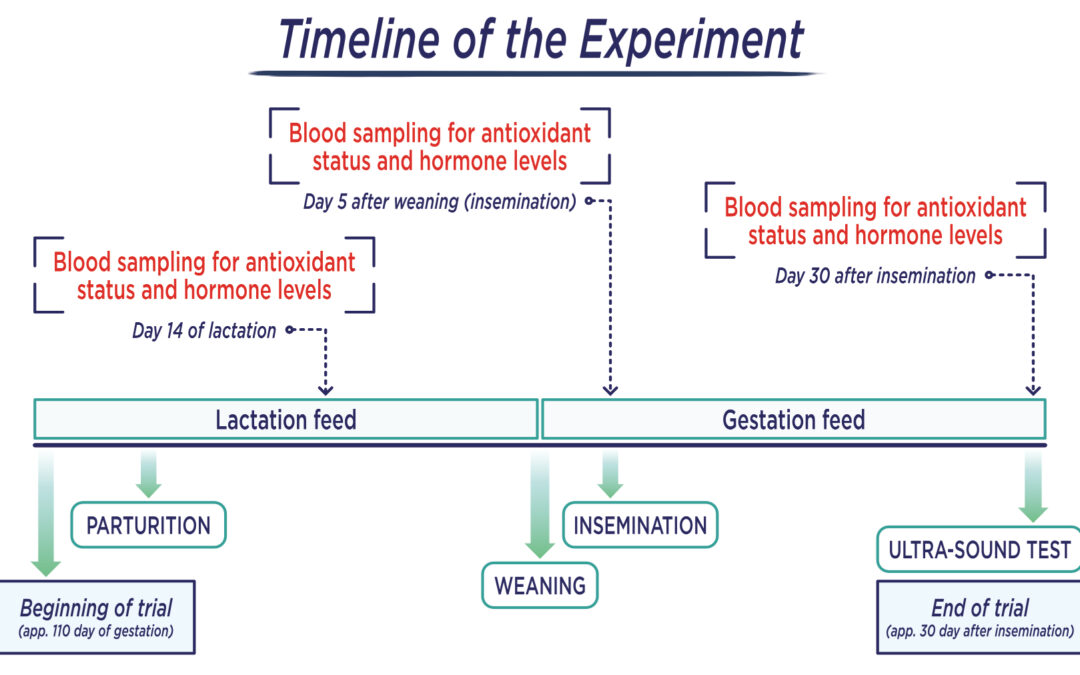
Animal Nutrition and Physiology
Since polyunsaturated fatty acids play an important role in immune and reproductive functions, a better understanding of their role in the nutrition of breeding sows can lead to better performance and more sustainable pig production. Together with colleagues at Hungarian University of Agriculture and Life Sciences, we investigated the effect of omega-6 and omega-3 fatty acid supplementation on the antioxidant status and hormone levels of sows. Our communication summarizing our results was published in the scientific journal Veterinary Medicine and Science.
Effect of omega-3 polyunsaturated fatty acid supplementation on oxidative stress parameters and sex hormone levels of modern genotype sows
Róbert Roszkos, Tamás Tóth, George Bazar, Hedvig Fébel, Miklós Mézes
Sows are exposed to severe stress and hormonal challenges during their whole productive life. As polyunsaturated fatty acids play an important role in immune and reproductive functions, with a better understanding of their role in breeding sows’ nutrition, improved performance and more sustainable pig production can be achieved. In this study, we investigated the effects of omega-6 and omega-3 fatty acid supplementation on the antioxidant status and hormone levels of sows. A total of 48 Danish Large white × Danish Landrace sows were supplemented either with sunflower oil (SO) as a control group or with fish oil (FO) as experimental group at the same dose of 6.3 g/kg feed. Blood samples were collected on day 14 of lactation, 5 days after weaning (insemination), and 30 days after insemination. To estimate antioxidant and reproductive effects, the amounts of reduced glutathione (GSH), thiobarbituric acid reactive substance, the activity of glutathione peroxidase (GPx), serum 17β oestradiol (E2), progesterone (P4), and 6-keto prostaglandin F1α (6-keto PGF1α) levels were investigated. FO-based supplementation increased GPx activity on day 14 of lactation. Five days after weaning, the concentration of GSH in FO-fed sows was significantly higher than that in SO-fed sows. The E2 content of blood was significantly lower in the experimental group than in the control group for two of the three examined periods (day 14 of lactation and 30 days after insemination), whereas P4 levels were significantly higher in the experimental group 5 days after weaning. We found that 6-keto PGF1α levels were systematically lower in the experimental group throughout the trial. This study provides evidence of the major impact of omega-6 and -3 fatty acids on the tested hormone levels, which serve as precursors for the production of E2 and P4 but have an opposite effect on PGF2α production.
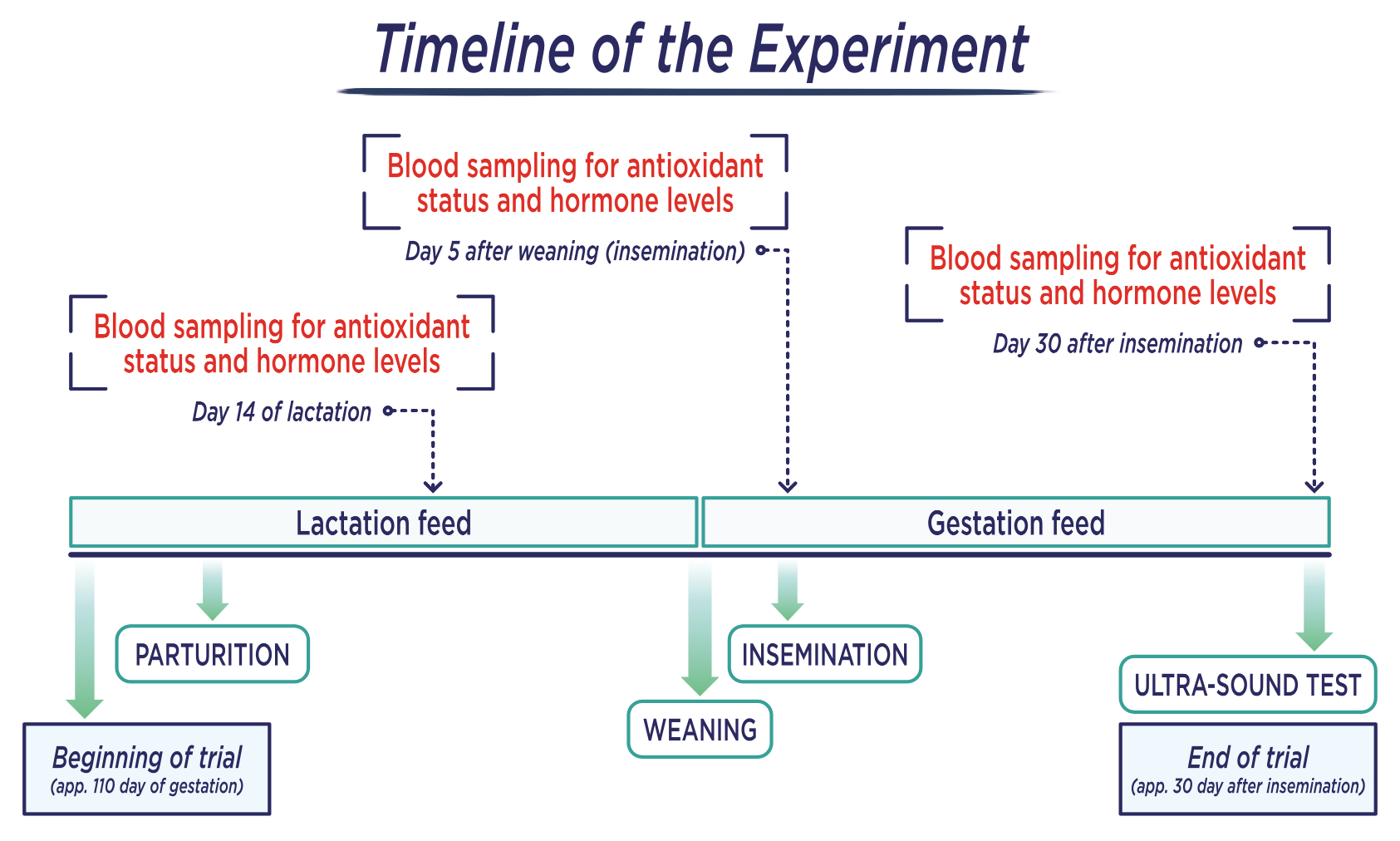
Access the full paper free of charge on the website of the journal:
» Effect of omega-3 polyunsaturated fatty acid supplementation on oxidative stress parameters and sex hormone levels of modern genotype sows

Animal Nutrition and Physiology, Instrumental Aroma Analysis
The smell of fermented forages characterizes their quality well, due to which characteristic the organoleptic evaluation is part of the routine quality inspection. Instrumental aroma testing techniques provide the opportunity to perform an analysis similar to human sensory evaluations automatically, always with the same conditions, objectively, even with a very large number of samples. In the framework of the research carried out with the colleagues of Hungarian University of Agriculture and Life Sciences and ÁT Kft., we developed a methodology with which we can characterize the quality of alfalfa and rye silages and haylages based on electronic nose data. We published our results in the Hungarian Journal of Animal Production.
Description of the odor profile of fermented alfalfa and rye silages using an electronic nose
Haruna Gado Yakubu, George Bazar, Éva Radó-Nyiczky, Szilvia Orosz, Tamás Tóth
Silages, as conserved forages, form a basic component of ruminant diets. The odor of silage is highly informative and helps in determining the quality. Electronic nose (e-nose) technology provides rapid and objective measurement of odors and may be applicable for quick screening of various silages. Aroma profile analysis of alfalfa and rye silages (n = 22 and 38, respectively) collected from Hungarian dairy farms, produced with different harvest technologies, and covering a wide range of quality, was performed with an e-nose utilizing the metal oxide semiconductor sensor array technology. The odor patterns of the quality categories based on the pH and the lactic acid/acetic acid ratio were compared. The applied e-nose was not suitable for distinguishing between samples made from different plant materials with average compositional parameters, because the effect of species on the odor was less characteristic than that of the diverse processing conditions. However, on the basis of the aroma profiles described by the measured sensor signals, alfalfa-based forages prepared with different processing (direct-cut vs. wilted) could be accurately identified, and rye samples were identifiable according to the different phenological phases at harvest (before heading vs. heading). In the supervised classification (discriminant analysis) of groups of samples based on pH and lactic acid/acetic acid ratio, 65-75% of the samples selected for validation were correctly identified, which indicates reliability of the method. Based on the results, the presented instrumental aroma testing methodology proved to be promising in the field of quality testing of fermented forages.
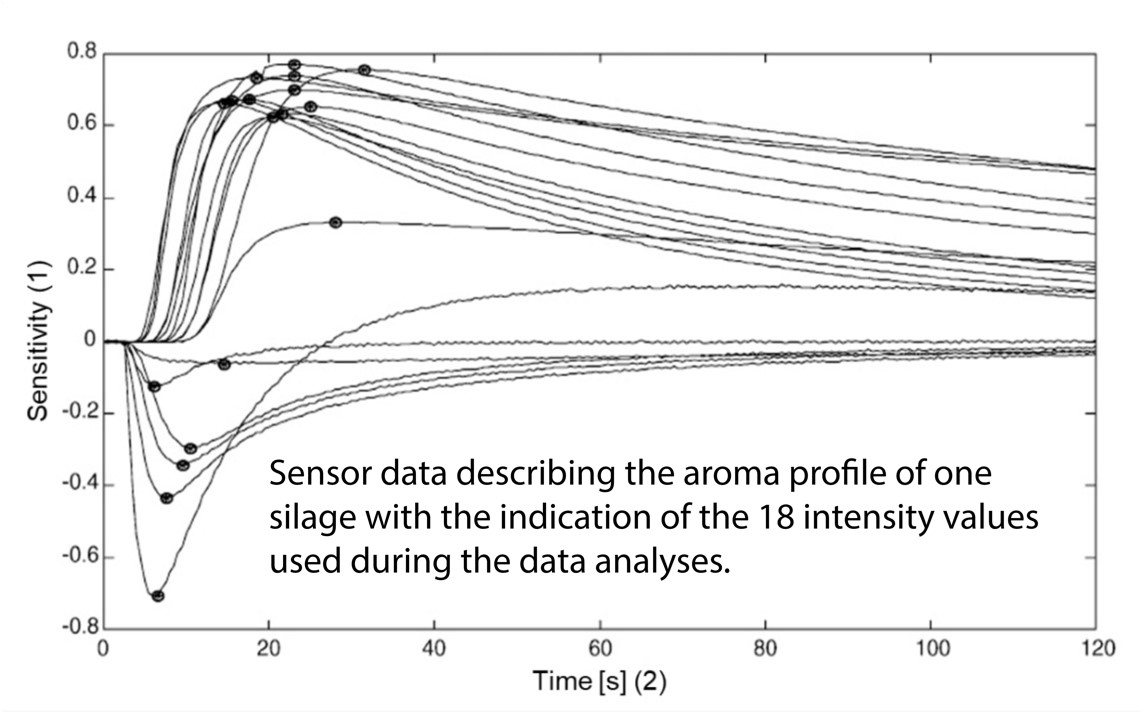
Access the full paper free of charge here:
» Description of the odor profile of fermented alfalfa and rye silages using an electronic nose
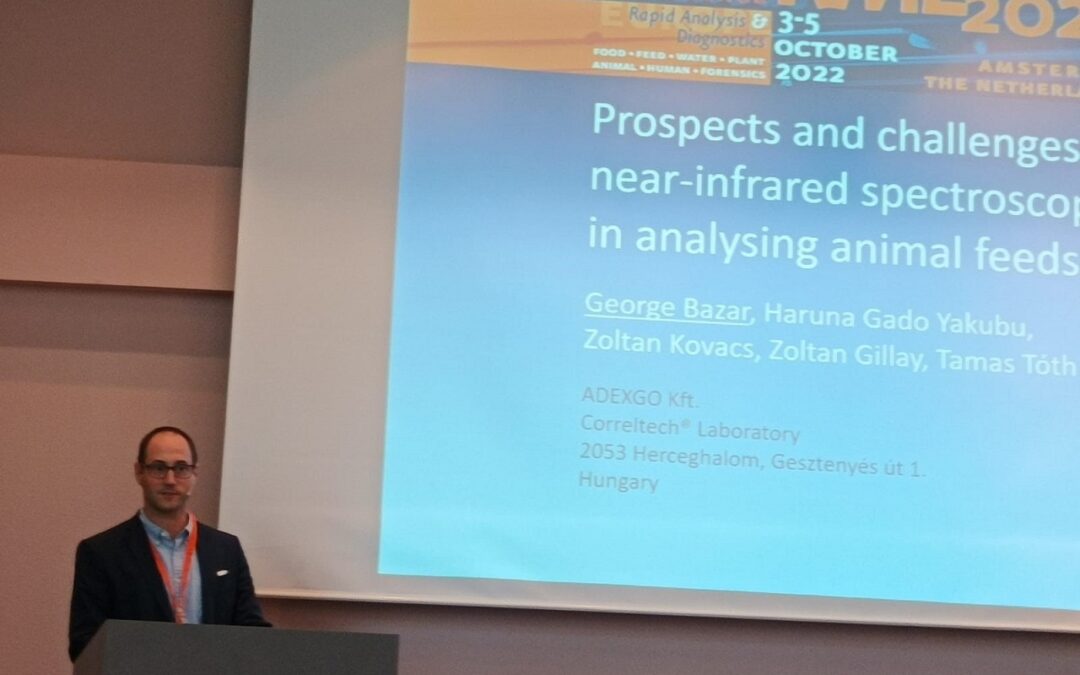
Events
ADEXGO’s colleagues presented the latest research results of the Correltech Laboratory at the Rapid Methods Europe international conference held in Amsterdam in the first days of October. Our results obtained during the examination of the effect of feeding on the smell of milk with an electronic nose were presented in a poster and in a short presentation, while head of research Dr. George Bázár, as an invited speaker of the conference, summarized the challenges experienced in the field of near-infrared spectroscopy when applied in feed analyses.
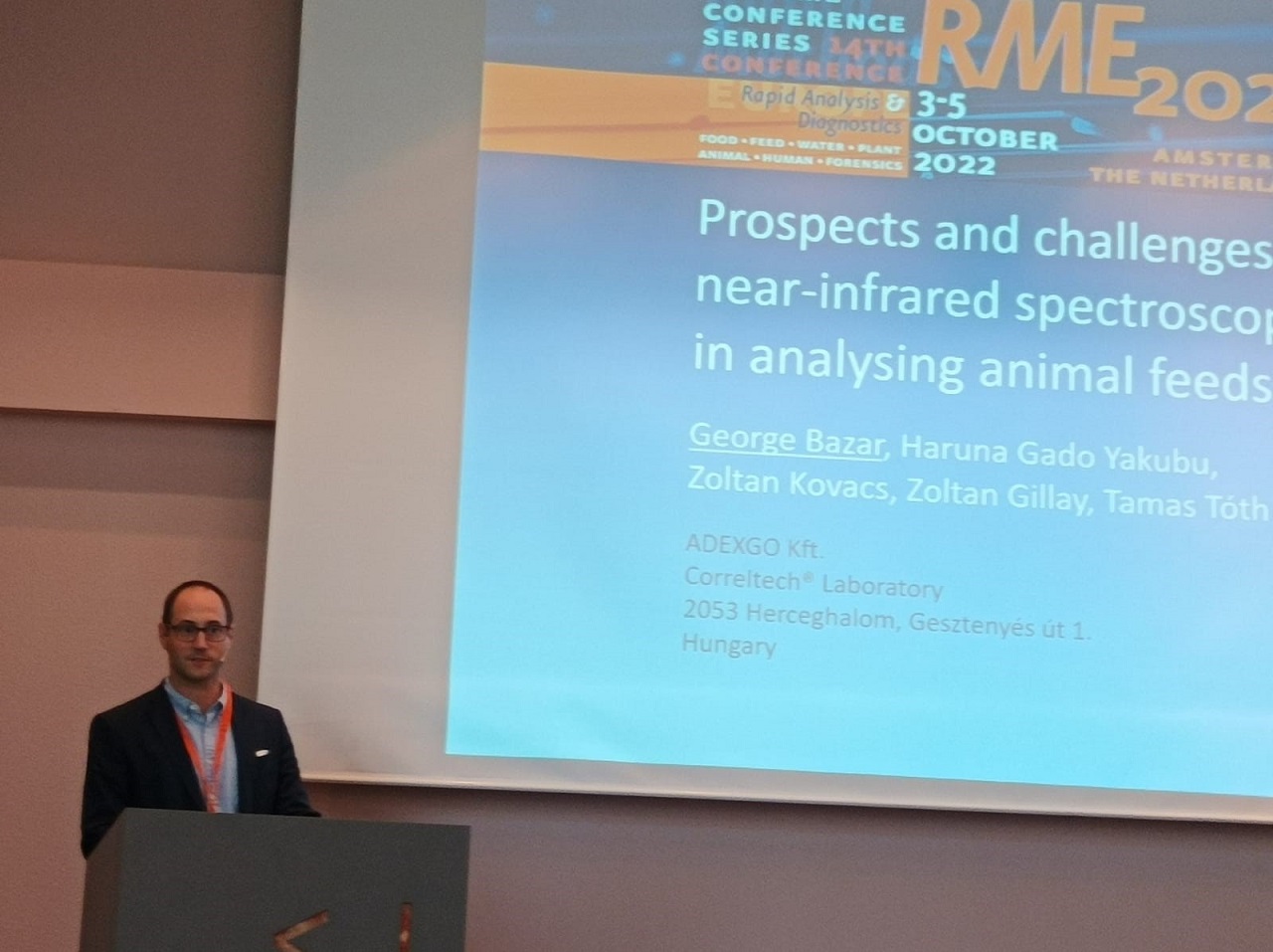
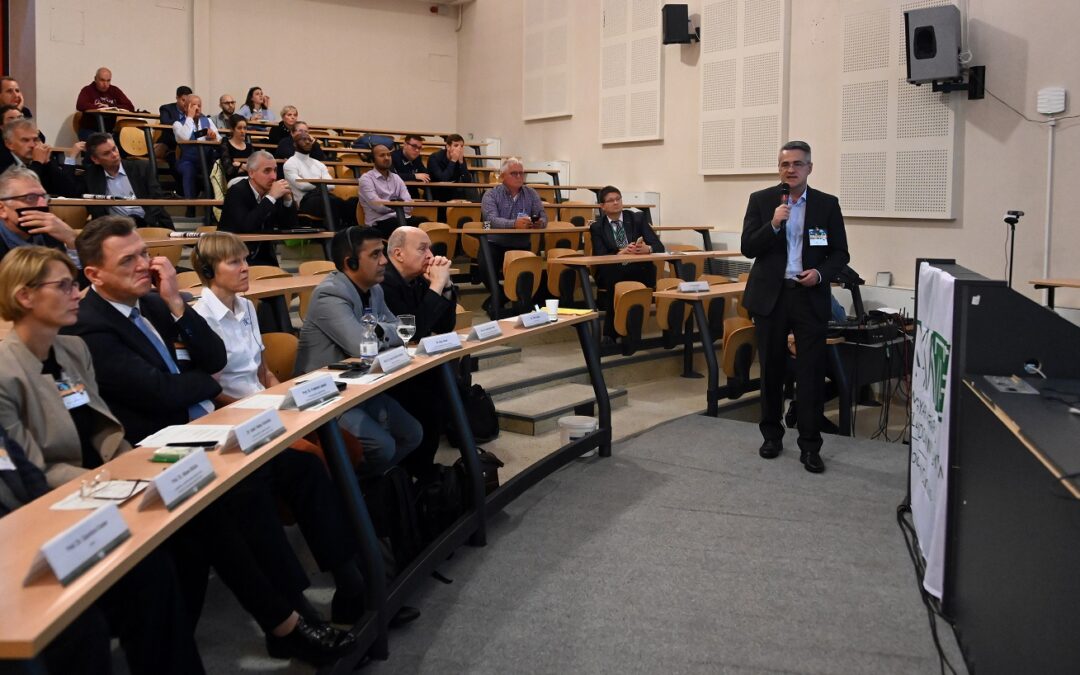
Events
The 20th International Symposium on Animal Nutrition was held at the end of September as part of the series of conferences leading up to the Kaposvár Animal Husbandry Days.
This time again, the organizers invited domestic and foreign speakers being specialists of the nutrition of the most important farm animals. In his presentation, the managing director of ADEXGO Kft., Dr. Tamás Tóth gave an overview of the new aspects of ruminant nutrition, especially that of dairy cows, and summarized the benefits of some innovative feed testing solutions.
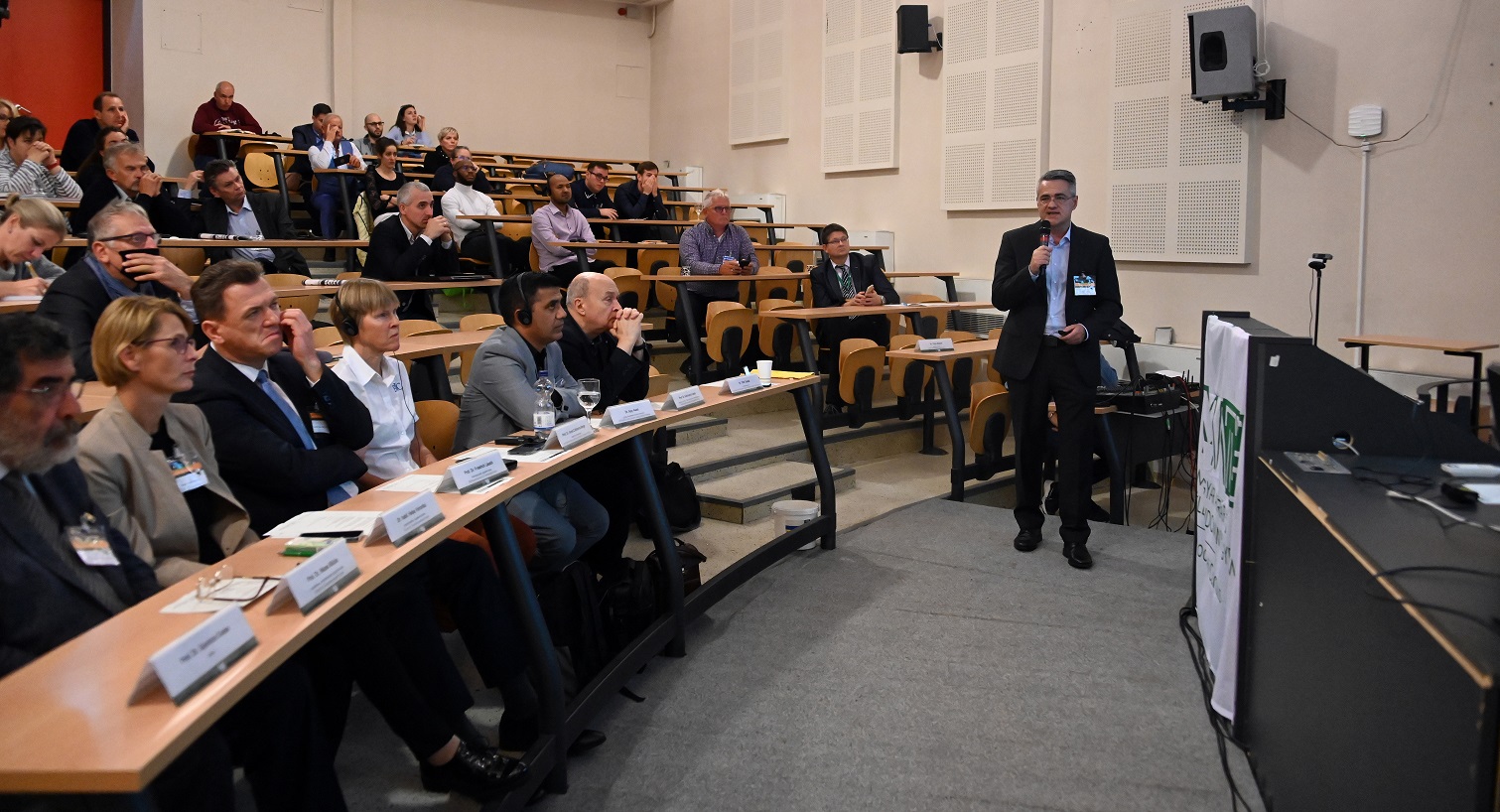
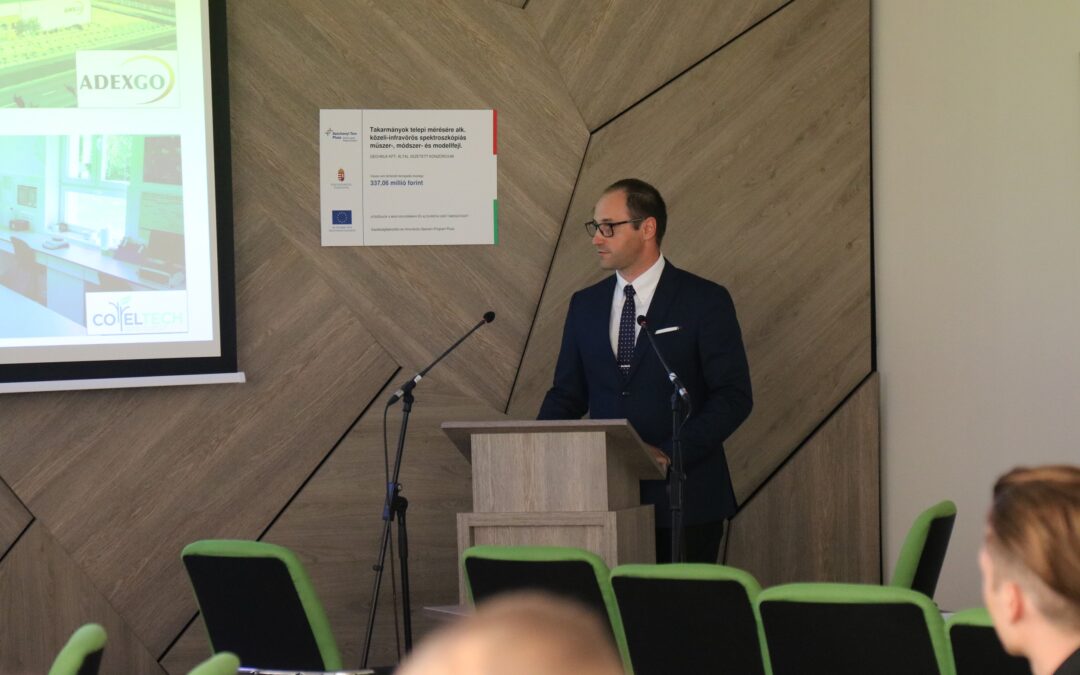
Events
At the invitation of GEO-MILK Kft. and Neumann János University, we participated in the public opening of the project GINOP_PLUSZ-2.1.1-21-2022-00144 entitled “Development of near-infrared spectroscopic instruments, methods and models suitable for on-site measurement of ensiled feed” at the NJE GAMF in Kecskemét on 25th August. In addition to the two members of the consortium, the subcontractors participating in the professional implementation of the project, including ADEXGO Kft., presented themselves. During the execution of the project, our company provides professional support in the technical application of near-infrared spectroscopy solutions and in the development of chemometric data analyses.
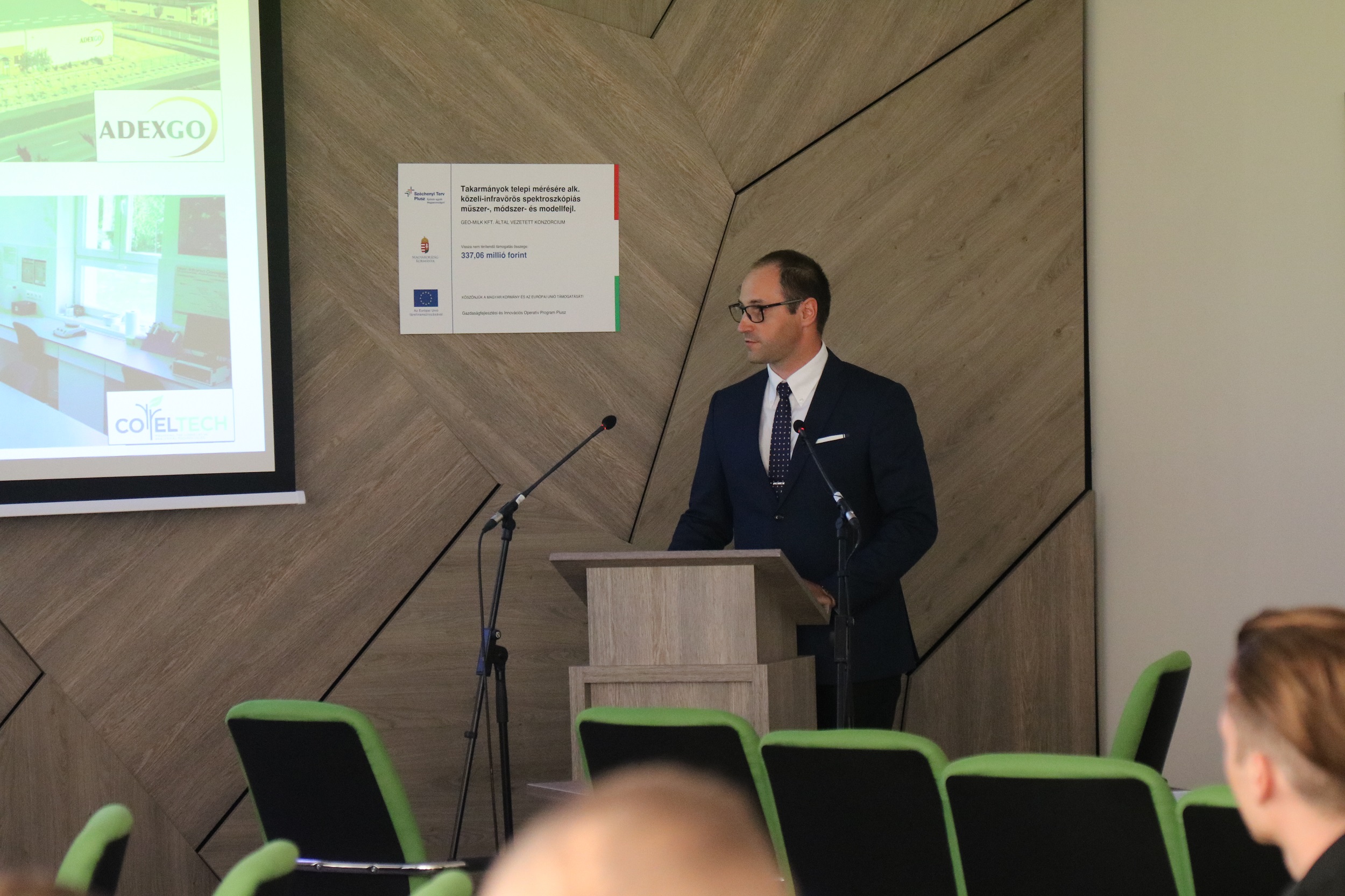
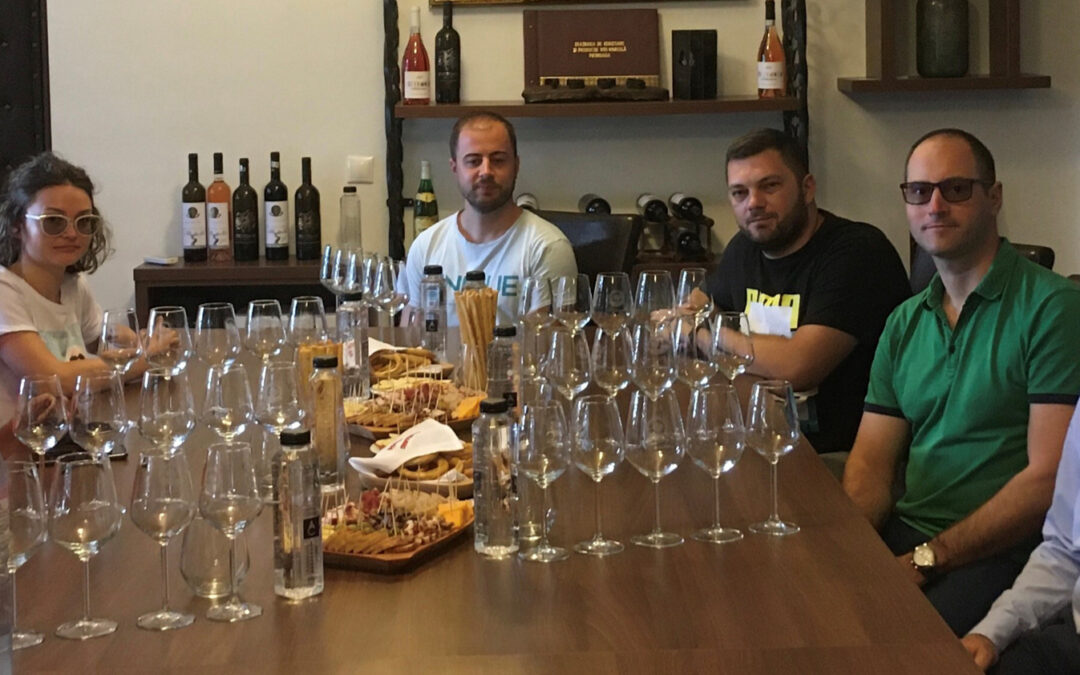
Events
Within the framework of the three-year EUREKA project launched in 2021, our company is making innovations in the field of wine quality testing, primarily based on the testing methodologies of the Correltech Laboratory. To conclude the professional tasks of the first milestone, we met the Romanian consortium partners in Bucharest, where we also agreed on detailed plans for the research to be carried out in the future. The objective examination of the quality of the wines, the early detection of wine defects and wine diseases, and the description of the aroma profile characteristic of the area will continue in the next two years in cooperation between ADEXGO Kft. and the Pietroasa Wine Research Institute, the Bucharest University of Agriculture and Veterinary Medicine, and Széchenyi István University.
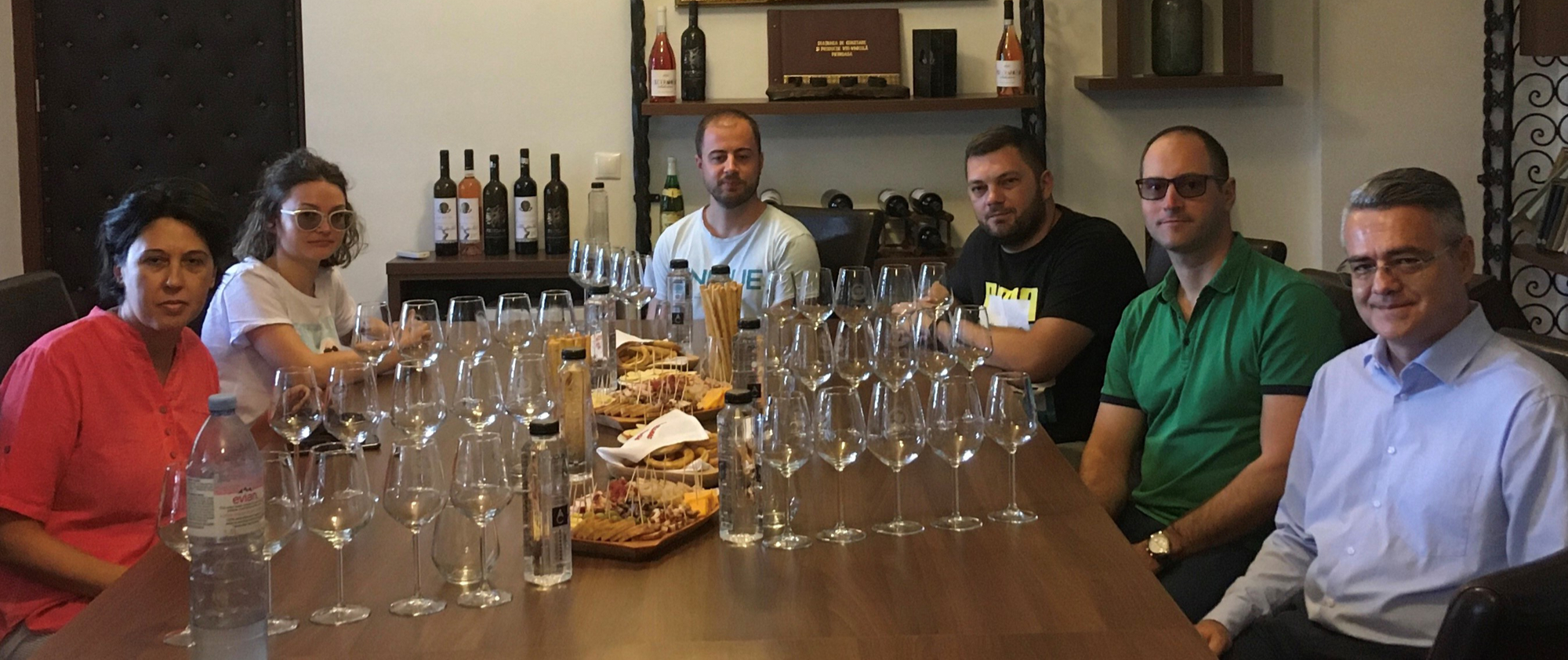

News
In 2020, ADEXGO Kft. accompanied with JEFO started to develop a supplementary feed for dairy calves. The results of the trial were published on the annual meeting of the American Dairy Science Association on June 19-22, 2022 in Kansas City as a poster presentation.
Development was based on the rumen protected vitamin B complex of JEFO constructed for beef calves to reduce the negative effects of post-weaning transportation stress. The new supplementary feed containing B vitamins (UP-2-WEAN-GO) promotes the development of dairy heifers before and after weaning. The product was tested at a central Hungarian dairy farm at the end of 2020.
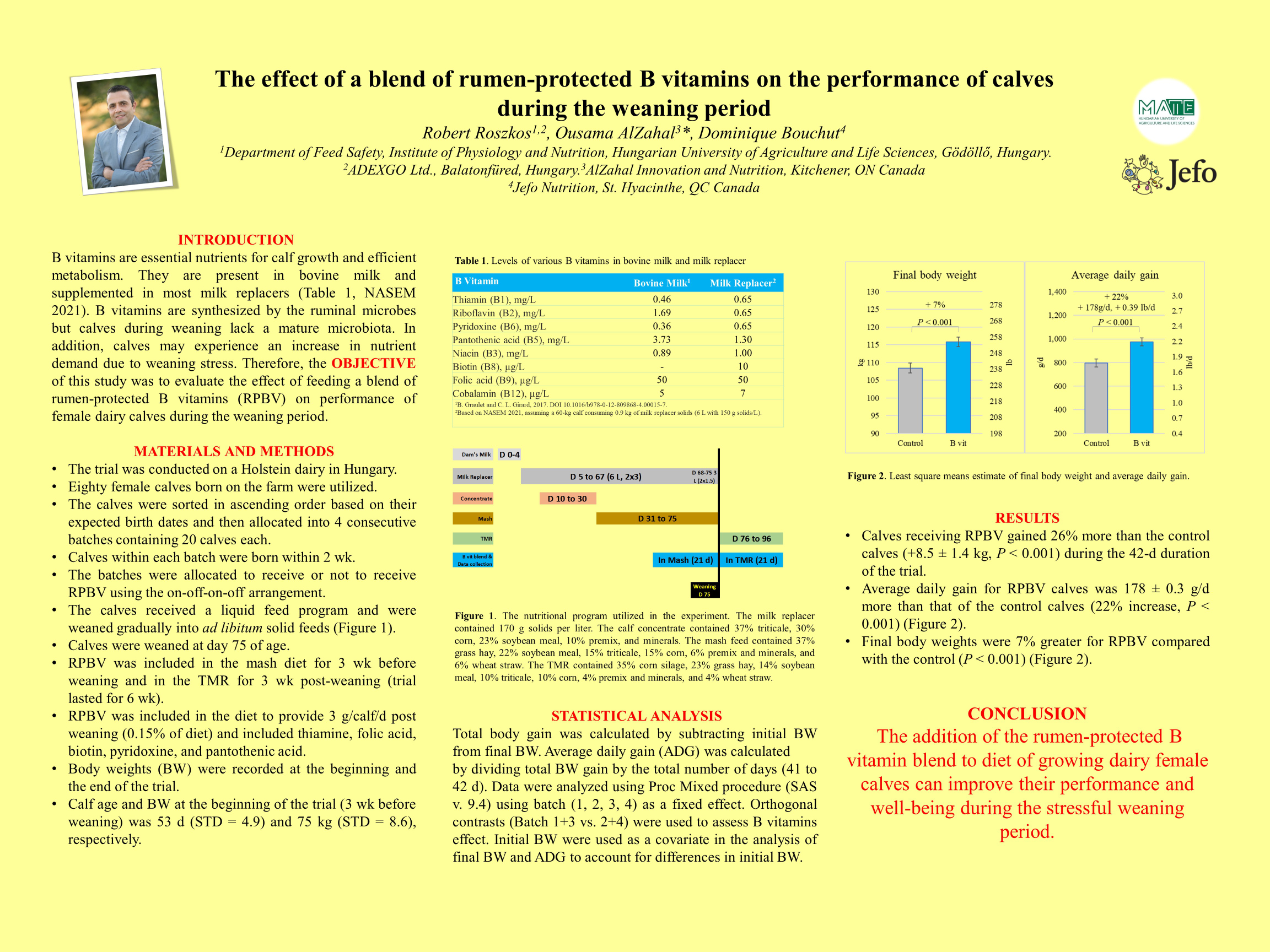
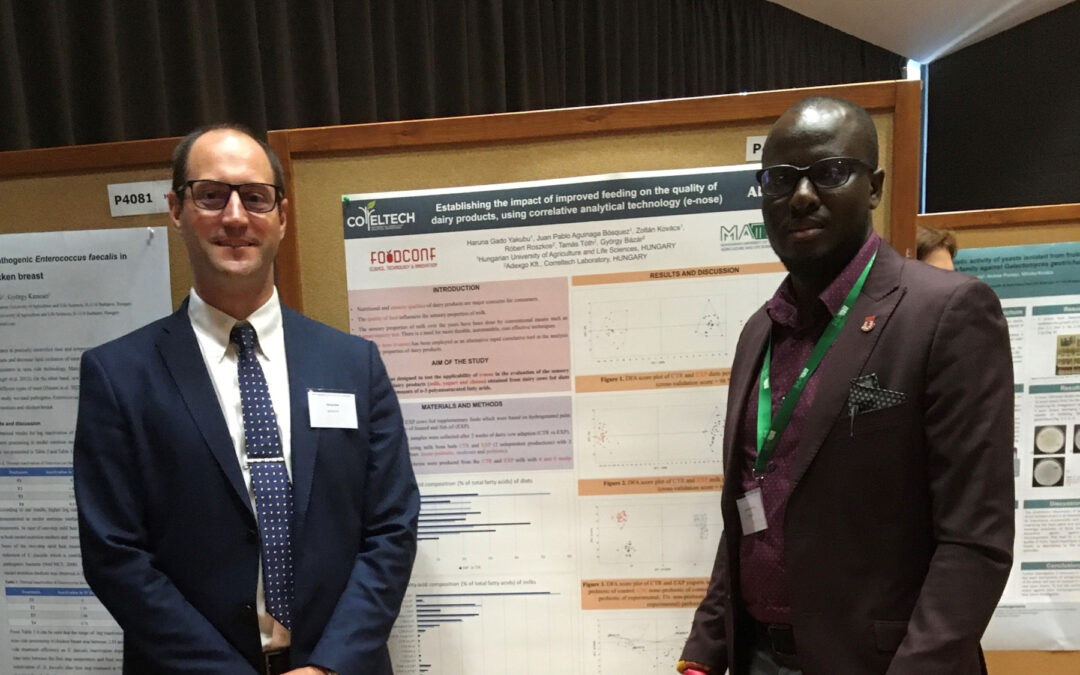
Events
FoodConf, the International Conference on Food Science and Technology, was held for the fourth time. Our colleagues presented two posters at the conference and presented the effect of special feeding of ruminants on the aroma profile of dairy products, as well as the applicability of instrumental aroma analysis in coffee quality testing.
